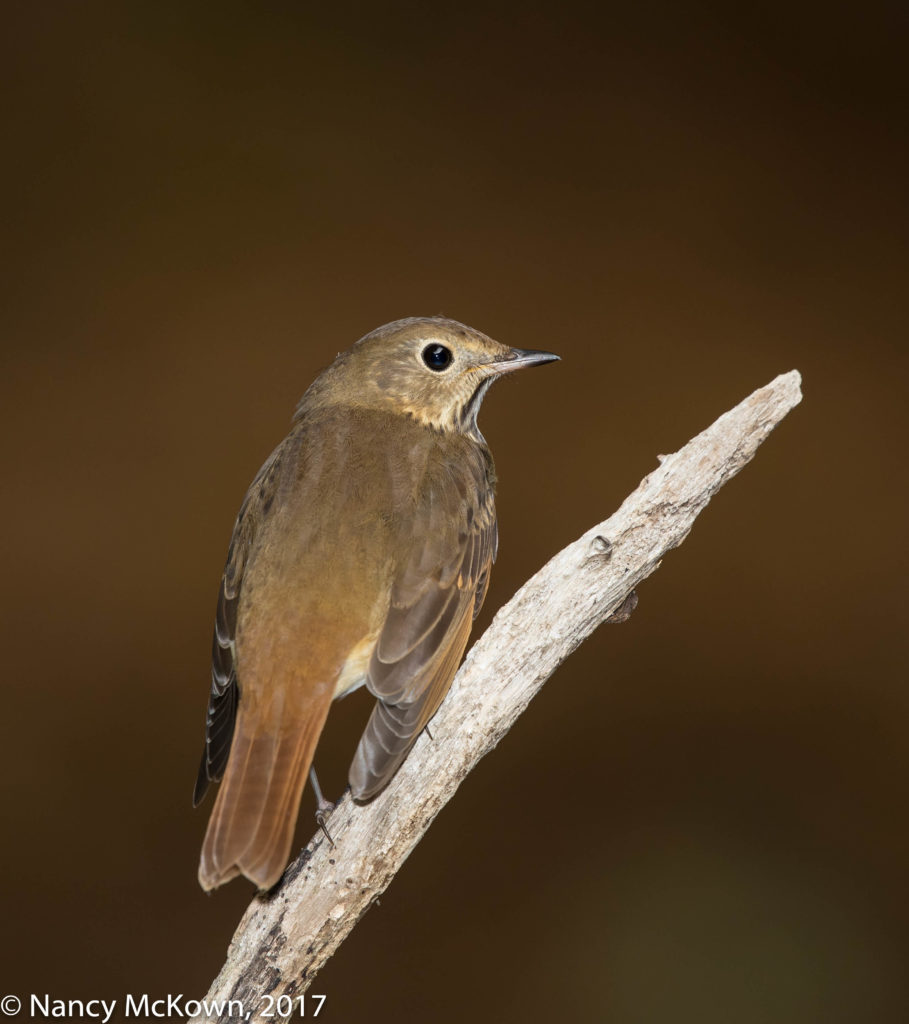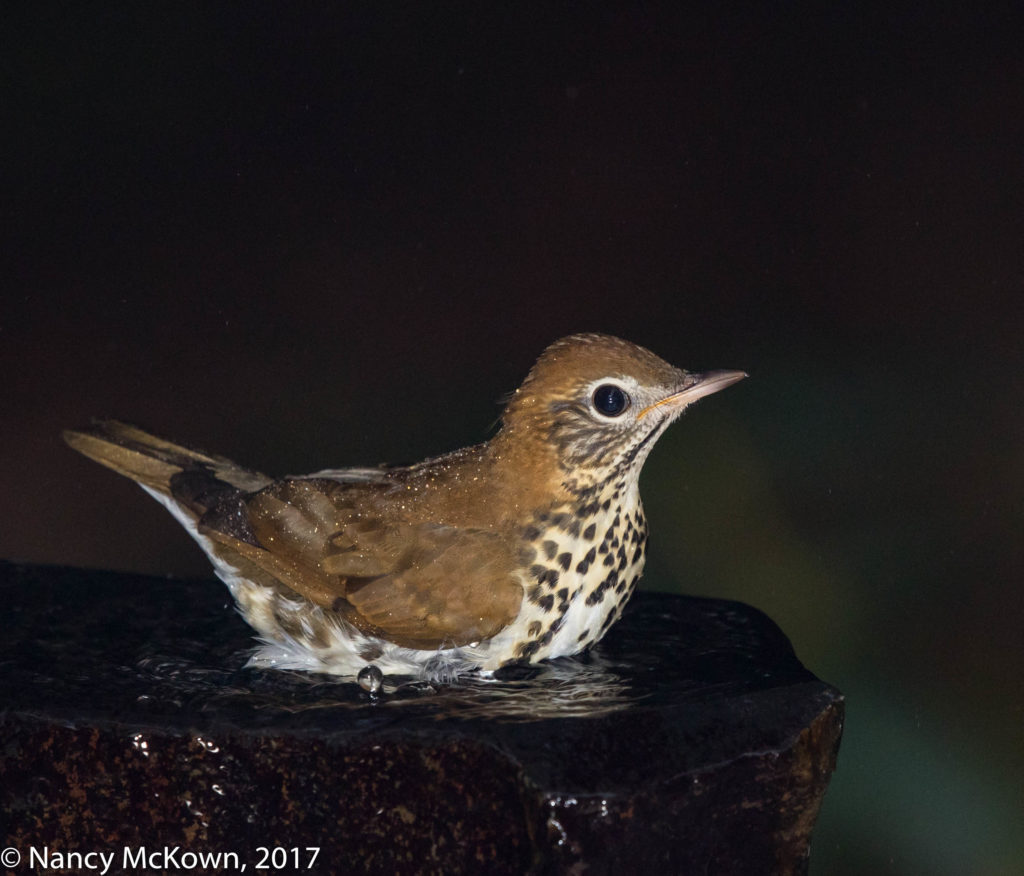Photographing Wood Thrushes
Over the years, I’ve photographed the migrating Veery Thrush and Swainson’s Thrush as they were passing through our yard, but never a resident Wood Thrush. Wood Thrushes tend to be very camera shy. I was familiar with their captivating flute like spring songs (filled with low mellow notes and high pitched trills) long before I connected the voice with the vocalist. It wasn’t until we installed a fountain near our deck that I realized that these handsome birds must spend the summer nesting and foraging in our back woods.

ISO400; f/8; 1/250 Second
Photographing in Evening’s Twilight
Around evening’s twilight, four or five Wood Thrushes quietly congregated at the fountain after all the other bird species had left. At first, only one or two bold and curious birds came. I could see a few more of their wary companions hiding in the dimness beyond the fountain. Light was quickly declining.
Metering and Managing the Light
They came in the near darkness, so that’s how I had to manage exposure. I switched the camera’s light meter mode from “Evaluative” to “Partial”. Metering modes tell the camera system WHERE in the scene to meter the reflected light. If you change the metering mode from “evaluative” (total scene) to “partial” (approx 6-10% of the area) or “spot” (approx 2.5% or less of the area), the light meter will narrow the area it takes into account when metering and possibly use different algorithms to read the reflected light. (NOTE: The histogram is a reliable way to see how the light meter is balancing the light coming into the lens.)
It’s always a challenge to control the light intensity of the flash and properly expose the subject (and not the background) especially when there’s so little ambient light to help out. The background area was so dark as to be indiscernible. The camera was set to Manual Mode and the flash (with fresnel flash extender) to E-TTL II so that the camera would automatically calculate the burst needed based on the exposure settings I chose. I toned down this burst by setting the flash exposure compensation (FEC) to -2/3. It turned out to be a good place to start. (NOTE: Often the sudden flash blast will disturb wary birds, but the thrushes did not scatter or even flinch when the flash went off.)

A Twilight Dip
In the Fountain.
ISO1000; f/8; 1/250 Second
A Lens Can Not Focus in Darkness
As it got darker, my eyes and the lens struggled to find edges and contrast on which to focus. (NOTE: A lens can not focus in darkness. If it’s too dark, it won’t even go thru the motion to hunt back and forth. There is nothing upon which its technical eye can fix – no contrast, no color, no edges, nothing.)
The moonlight and starlight that night offered some help. In addition, the fresnel attached flash emitted a light beam (auto focus assist beam) so the lens could do its calculations for autofocus to work. NOTE: That assist beam only travels so far, and no doubt not as far as the fountain…a good 20 feet.
As you can see in the photos above, the lens did have sufficient light to lock focus.
Thrush ID
In January, 2017, I published a post on what I thought was a Wood Thrush, but when I looked back at those photos and compared them to the boldly colored Wood Thrushes included in this post, it was clear that I made an ID error and instead posted photos of a Hermit Thrush.
A rather obvious mistake, considering how distinctive looking Wood Thrushes are. I’m getting better at bird ID as time goes by, but I still have trouble telling the difference between thrush species. Wood Thrushes are one of the easiest thrushes to identify with their rich cinnamon feathers and bold brown densely spotted white breast. Like Robins, they spends most of their time hopping around on the ground flipping leaves and pouncing on whatever little creature surfaces. Most of the time, if I am at all unsure, I don’t publish without having the experts at What Bird.com verify a species ID. Clearly I skipped that step when I posted in January. Corrections have been made.








